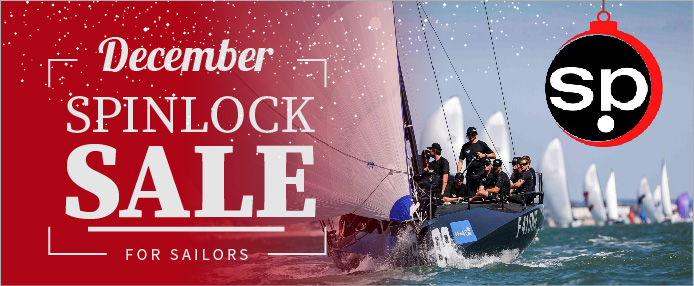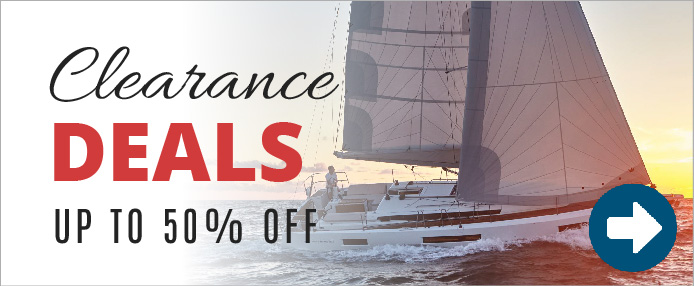Torsion cable
Torsion cables, sometimes referred to as anti-torsion cables, are specifically designed to provide maximum torsional stiffness for code zero, gennaker and asymmetric spinnker furling. A good cable will ensure fast torque transmission along the full length of the cable, from the tack to the head of the sail. Used with code zero and asymmeric spinnakers to carry torsional load up or down the luff of the sail as it furls around the cable. In code zeros the torsional cable is usually enclosed in a pocket in the luff of the luff of the sail. The majority of code zeros furl bottom up but some, larger / performance orientated racing code zeros may use a top-down furling technique. Read more...
With bottom up furling the tack of the sail is attached to the cable thimble and when the drum starts to furl the cable starts to turn and the sail is wrapped around the cable. Whereas with asymmetrics the luff of the sail flies free of the cable. The tack of the sail is on an independent swivel so that when the drum furls the torque is transferred along the full length of the cable to the head of the sail where it stats to furl.
Difference between torsional cable and torsion rope and when to use one or another
Torsional cables are custom made to a specific length from Unidirectional composite core fibres. Furling thimbles are built into the sail during cable construction. Torsional ropes are manufactured in long lengths on a roll (200m+), and then cut to length for each sail. The terminations are created by wrapping the end of the rope around a furling thimble and then the rope is doubled back on itself and clamped together to form a solid termination. Torsional ropes have the benefit that tey can be finished on the dock but the terminations are significantly heavier and bulkier than custom torsional cables.
Torsional ropes are limited by the clamped rope ends. As both tensile loads (code zeros) and torsional loads (asymmetrics) increase you can start to have problems with thimbles ripping out of the rope loop or rope clamps slipping.
Our rule of thumb guidance is that the following rope length limits should apply:
- Top-down furling – 15m
- Bottom-up furling – 20m
If your required cable length is above these limits then you should seriously consider switching to a custom cable.
How torsional cables work, how they are made and length at load
A torsion rope/cable acts as a torsional tube. Diameter is a key function of torsional stiffness. Increase torsional stiffness by increasing cable diameter, relative to length. Torsional ropes/cables generally have a unidirectional core covered by a minimum of 2 braided layers that are bonded together with resin which forms the torsional tube on the outside of the core.
This is a very important consideration when specifying rigging elements. This means every time we specify a cable length, it is important to say at what load the measurement should apply. This is not an issue in running rigging as a rope is not cut to fit exactly between two fixed points e.g. you normally have several meters of excess (rope tail) behind the winch or clutch. But for torsional cables – there is a fixed amount of space available between the furler on the bow and the halyard sheave at the top of the mast. The objective is to maximise the use of the available hoist but make sure the cable can be loaded appropriately in all conditions. Composite cables are very stiff but they do stretch when load is applied (but then so does rod or wire) and the amount they stretch will vary depending on the core fibre used and the construction of the cable.
For top-down furling, the tensile loads are relatively low compared to the actual working load of the cable. For torsional ropes, where build length accuracy is lower, we would generally use 75kg. For much more highly loaded code zero cables, to be safe, you need to allow for the working load of the furler which can often be 1.5-3T. We will normally make these allowances for you or double check your length assumptions. However, if you are replacing an old cable it is important that you give us a length at a specific load. “Hand tight” is a relatively meaningless length and we recommend customer use a fixed point and a ratchet strap on the other end of the cable which in most cases will result in approx. 50-75kg of load.
Can I furl my torsion cable in both directions?
Despite the fact that a continuous line furler can be furled in two directions, you should ALWAYS FURL IN ONE DIRECTION. The braided covers are applied in a symmetrical patten but the first time a torsional cable is used to furl the sail, the fibres in the cover will move slightly to align themselves to the direction of torsional load. Therefore the first 1-2 times a cable is used the fibres settle and then remain in the same location. If you load the cable in both directions the fibres in the braided covers will be constantly moving which will break down the resin which gives the cable its stiffness.
Difference in top-down vs bottom-up ropes/cables
It is very important to understand that a torsional cable of the same length is designed very differently depending on the application. For Code Zero / Bottom up furling. Tensile loads are much higher in these straight luff sails and so core materials like PBO and SK99 provide increased cable stiffness. Cables diameters should / can be reduced for two reasons: to minimize upwind drag and because with bottom up furling, with the cable in a pocket, after the first 2-3 turns the luff of the sail assists the cable to create torsion. For asymmetrcis and top down furling cable diameters need to be greater relative to length compared to bottom-up furling. These cables are only loaded during furling and unfurling and overall loads are very low.
How to find the right torsion cable for my needs?
Our online ranges are designed with the above length guidelines in mind. The best way to find the correct rope/cable for your needs is to search for your required cable length. N.B. for Code zero sails where the cable runs in a pocket up the luff the cable length should be determined by the sail luff length. For top-down asymmetric sails we will always specify the cable to maximise the available max hoist space, regardless of sail dimensions. You will most likely be presented with 2-3 rope options and some custom cable options (above 15m). For top-down furling chose the option with the largest diameter. For bottom-up furling you can choose the option with the smallest diameter.
IMPORTANT: if you are buying a cable/rope for an existing furler / sail it is essential that you check the compatibility of the furling thimbles on the cable with the Jaw/pin of the furling drum and swivel .

To install this Web App in your iPhone/iPad press
![]() and then Add to Home Screen.
and then Add to Home Screen.



